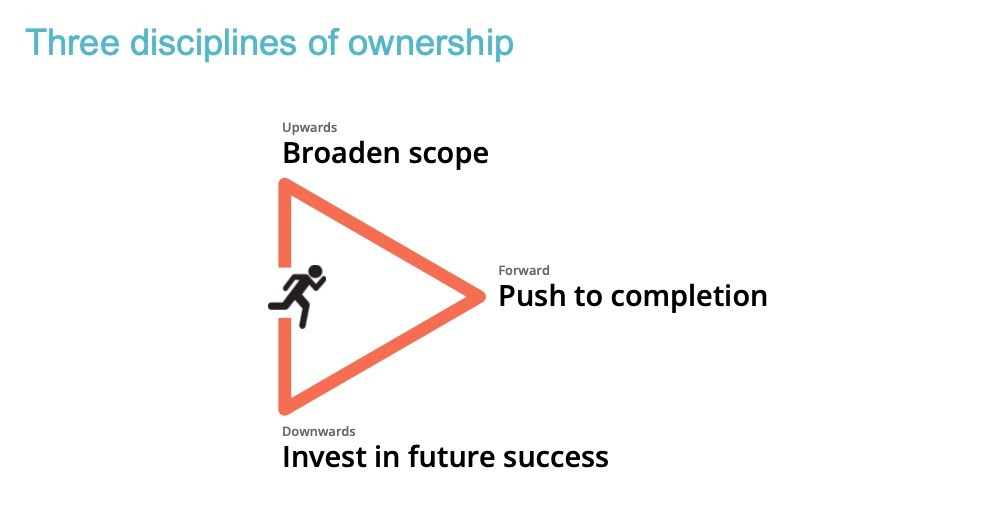In the previous article in this brief series on ownership, I explained that as leaders we have the responsibility to create an ownership environment for others and that everybody has a responsibility to generate an ownership stance for themselves.
Today we're going to look at what taking an ownership stance really means.
The way I see it, an ownership stance involves three main disciplines, as shown in the diagram below.

1. Push to completion
The first ingredient of the ownership stance is pushing to completion.
I call this the forward motion because it’s about driving projects and deliverables over the finish line.
It's about not giving up when you don't necessarily get the resources and inputs from stakeholders that you don't control directly.
Instead, pushing to completion requires you to do everything you can to fulfil your commitments:
- influencing across boundaries,
- escalating when necessary, and
- making delivering the goal a matter of personal pride.
What deliverables do you need to recommit to, in order to get them over the finish line on time?
2. Broaden scope
The second ingredient of the ownership stance is broadening scope.
I see this as the upwards motion as it involves getting out of your own small perspective and understanding the bigger perspective of the business.
It's about focusing less on your own personal metrics and goals. And focusing more about the interrelationships between your own department and other parts of the business.
In short, it's thinking like the owner of the entire business instead of the person responsible for just your microcosm.
How would your behaviour change if you optimised for the entire business, and not just your own team?
3. Invest in future success
The third ingredient of the ownership stance is investing for future success.
Whereas hired help will tend to just to focus on the job they've been told to do, and the results they need to generate this week or this month or this quarter, owners will be thinking about making things even more successful in the future.
As I explain in my book, the most important project is the one that nobody is asking for.
Investing in future success is the strategic question. It's the downward motion because it's an investment of time and energy.
If you think about financial investments, you spend money in the short term. Your cashflow actually goes negative in order to generate a bigger return in the future and that's the same with this discipline.
Owners make short term sacrifices for longer-term gains.
What’s the investment project you’re working on right now “that nobody is asking for?”
What about your ownership stance?
So, these are the three elements of the ownership stance.
Which one are you strongest in?
And which one do you have the most opportunity to develop?



